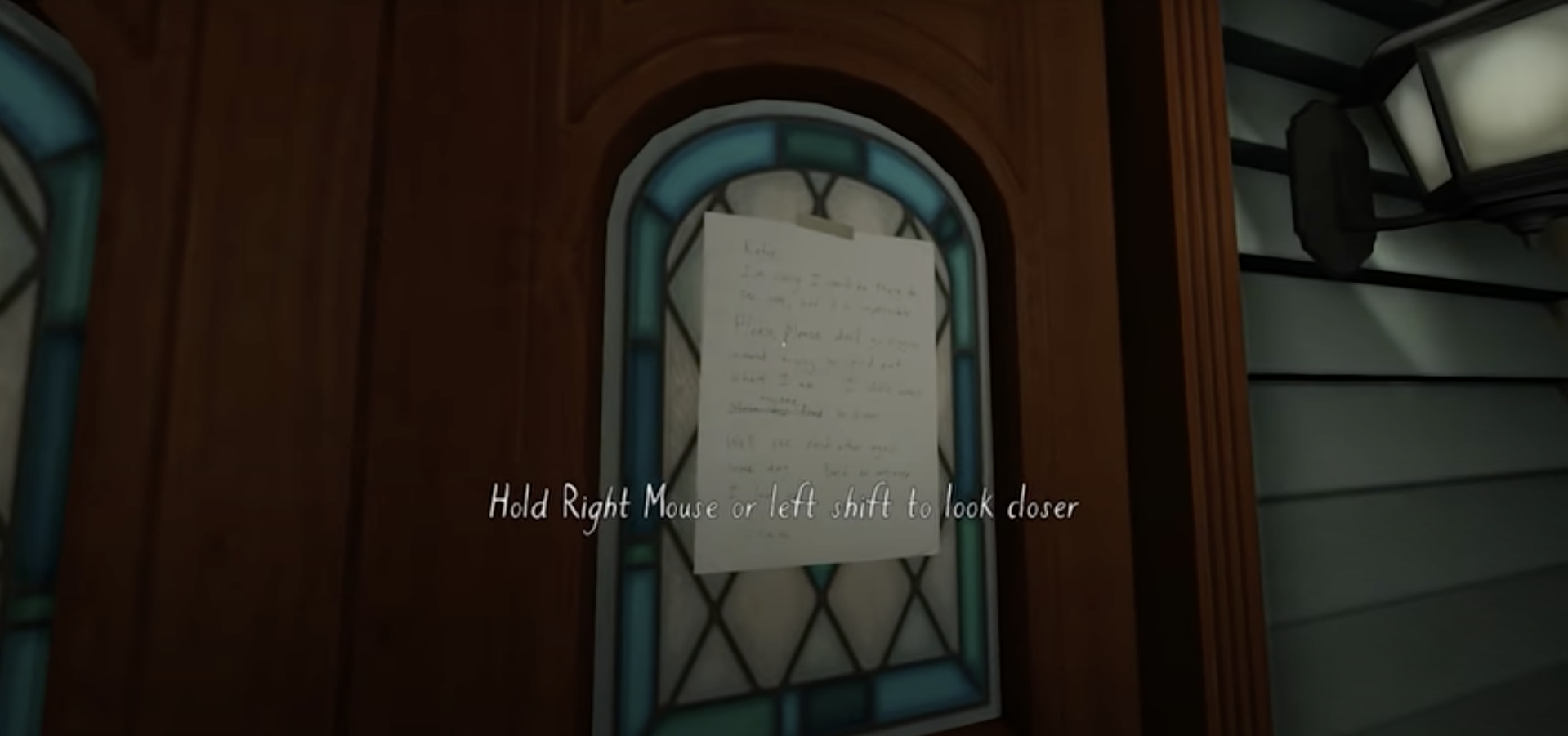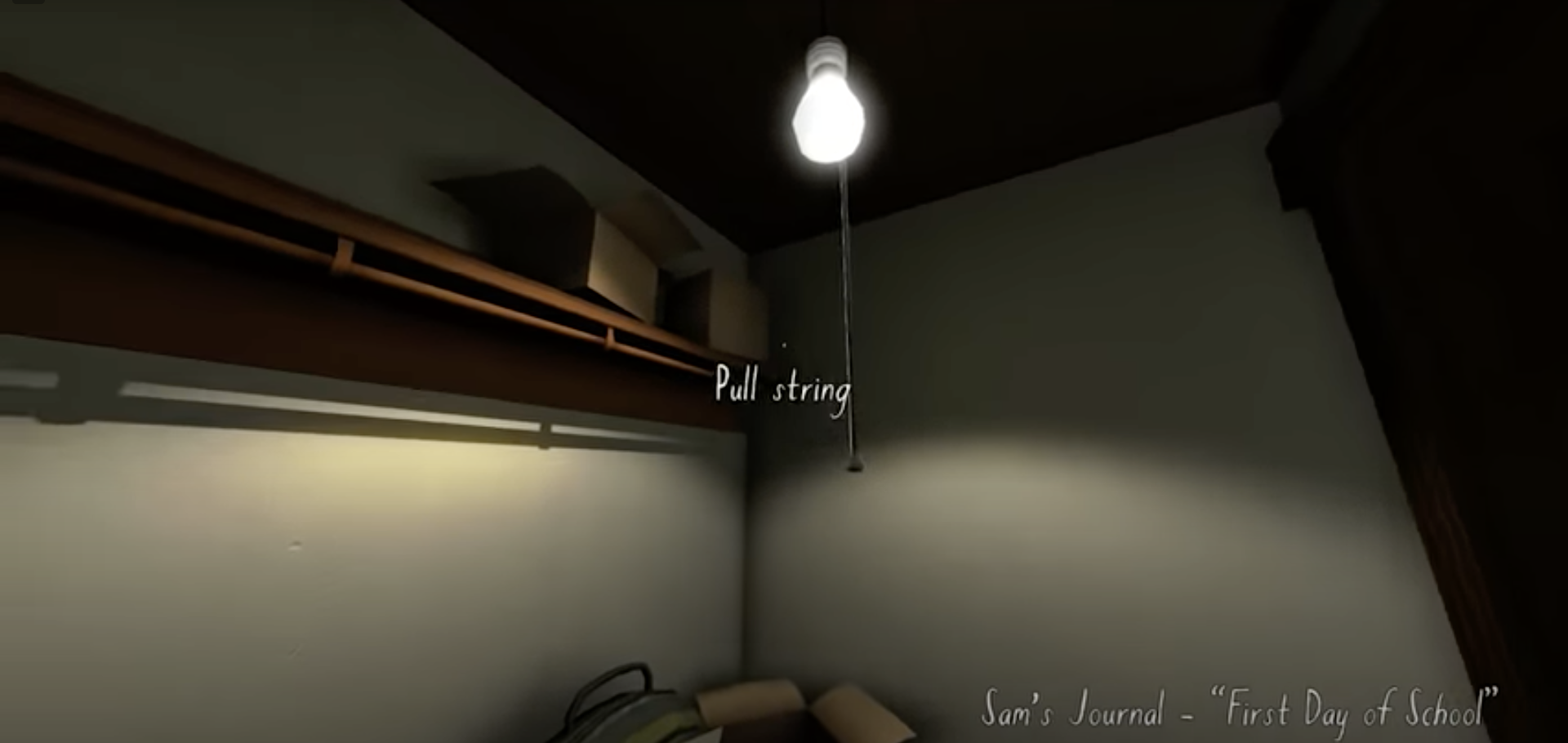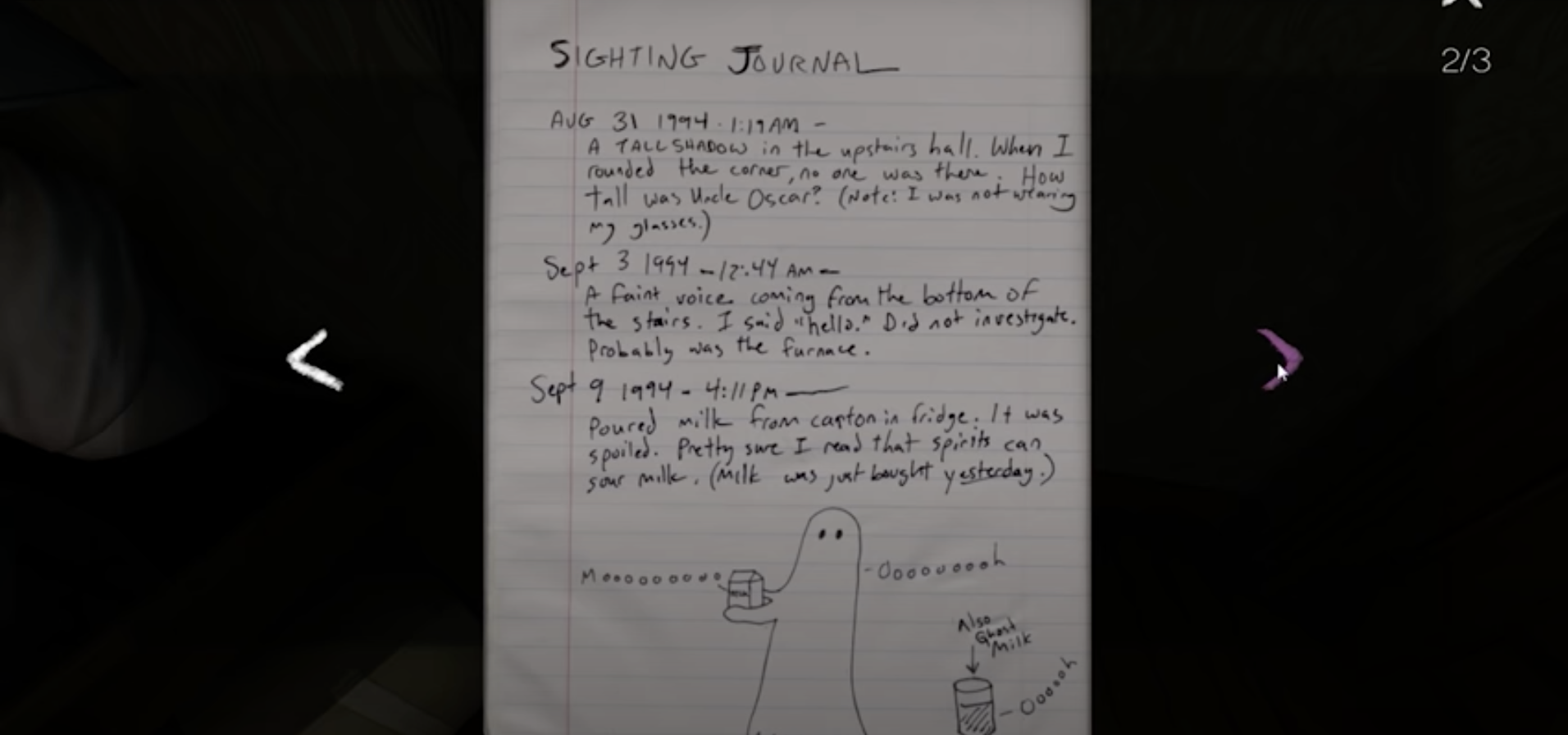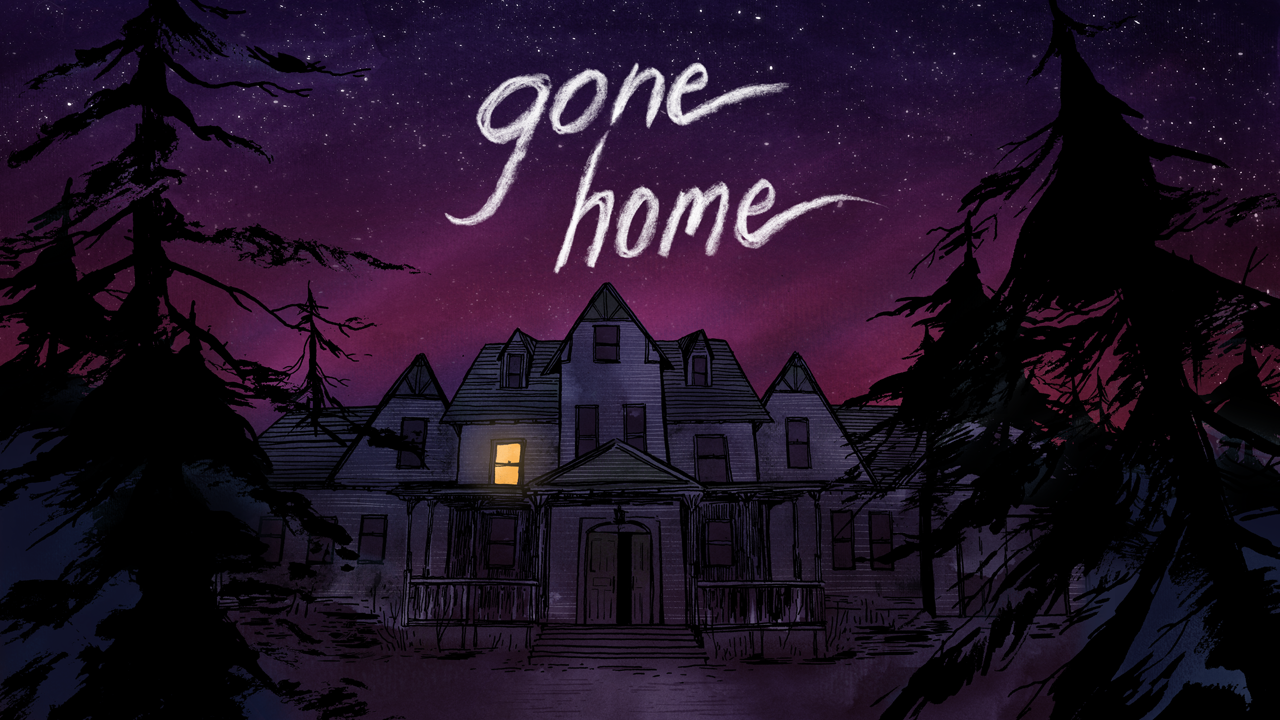Gone Home is a first person single player exploration game (frequently dubbed a ‘walking simulator’) made by The Fulbright Company. The player assumes the role of Katie, a woman returning from a year abroad in Europe to find her house completely empty. By rummaging through her house and finding clues, she pieces together an explanation for her parents and sister’s disappearance.

FUN FOR EVERYONE
“The game designers make it obvious that they don’t make any judgements on who gets to play their game. They want everyone to be able to experience the story and revel in its beauty.”
Like most ‘walking simulators’, Gone Home’s game mechanics are decidedly simply. The player is put in a first-person view where they can walk around, look at objects and interact with them. This interaction mainly involves closely inspecting items and reading their details. AND…that’s it. Those are all the resources the player has to solve their mystery. In essence, the players learn the entire mechanics of the game in the first 30 seconds of play. This easy-to-pick nature of the game makes it inviting for veteran games as well as newbies who might never have played any video game before. The game designers make it obvious that they don’t make any judgements on who gets to play their game. They want everyone to be able to experience the story and revel in its beauty.
NO FRILLS – JUST WALK AND DISCOVER
“…if Gone Home’s mechanics were any more complex and if it were anything other than a ‘walking simulator’, it would have taken away from the focus of the story.”
I think because the mechanics are so natural and tightly integrated into the game’s narrative, they practically disappear into the background and become part of the narrative. For instance, at the start of the game, I felt unsure of what I had to do and was gingerly making my way from room to room. However, once I started interacting with objects and finding clues, the story started unfolding in front of me and I become more and more excited about getting to the next recording. I think if Gone Home’s mechanics were any more complex and if it were anything other than a ‘walking simulator’, it would have taken away from the focus of the story. As players, we would have been too busy mastering a mechanic and wouldn’t have been able to emotionally weigh in on Sam’s journey with Lonnie as much as we did.

THE FUN OF WALKING IS IN THE WORLD
“Since the game is situated in unfamiliar surroundings, and it’s coupled with the mystery of Katie’s family, the walking becomes suspenseful. “
Given that the entire game rests on walking, it needs to be fun enough to retain the player’s interest. In Gone Home, this is done through the world the game designers have created. The masterstroke in designing this space was to have Katie come back to a home that she’s actually never seen (her family moved while she was abroad). She’s put in the weird position of returning to a ‘home’ she knows nothing about. Thus, the player’s uncertainty as they walk around this house is complimented with Katie’s, and they’re both present in the same new narrative space.
Since the game is situated in unfamiliar surroundings, and it’s coupled with the mystery of Katie’s family, the walking becomes suspenseful. The game designers capitalize on this hesitancy by making the house seem like a haunted manor from the 60s. The large rooms, wood-paneled floors and fluorescent lights evoke all sorts of nightmarish feelings in the player. In a weird way, the designers contrast the player’s desire to find out about the story with a conflicting want to not move, since they can’t be sure of what they’ll find in the next room. In retrospect, this is even more surprising considering that there’s no real paranormal activity in the entire game. Despite that, the player is constantly made to feel dread, and Sam’s burgeoning conflict with her parents about her identity leaves them even more scared for her fate. For instance, towards the end, when the player finally gets into the attic, the story at that point is at its climax, with Lonnie leaving for training and Sam extremely upset at her parents. Players are filled with the fear of what or who they’ll find in the attic, a room that is already scary to begin with. This sort of emotion is only possible due to the unsettling world the designers create for us through our walking.
“…the walking is also made fun through the designers use of environmental storytelling in the world…There’s hardly ever an object in the game that doesn’t add something new to the player’s knowledge, and puts them an inch closer to figuring out where everyone is.”

In addition to the overall surroundings, the walking is also made fun through the designers use of environmental storytelling in the world. From Sam’s notes and audio journal entries to her parents’ letters and everything in between, every room in Gone Home is rife with new context clues pertaining to the story. There’s hardly ever an object in the game that doesn’t add something new to the player’s knowledge, and puts them an inch closer to figuring out where everyone is. To ensure that the clues don’t become one-dimensional, the designers also craft multiple sub-plots within the story, such as Katie’s father’s writing work and her mom’s conservationist life. This leaves the player running parallel storylines and makes them even more puzzled about how all these different pieces of information connect together in a coherent manner.
In short, the unfamiliar and scary home architecture, combined with the rich use of environmental storytelling, leave the player constantly engaged and makes the act of walking from room to room fun and interesting.



